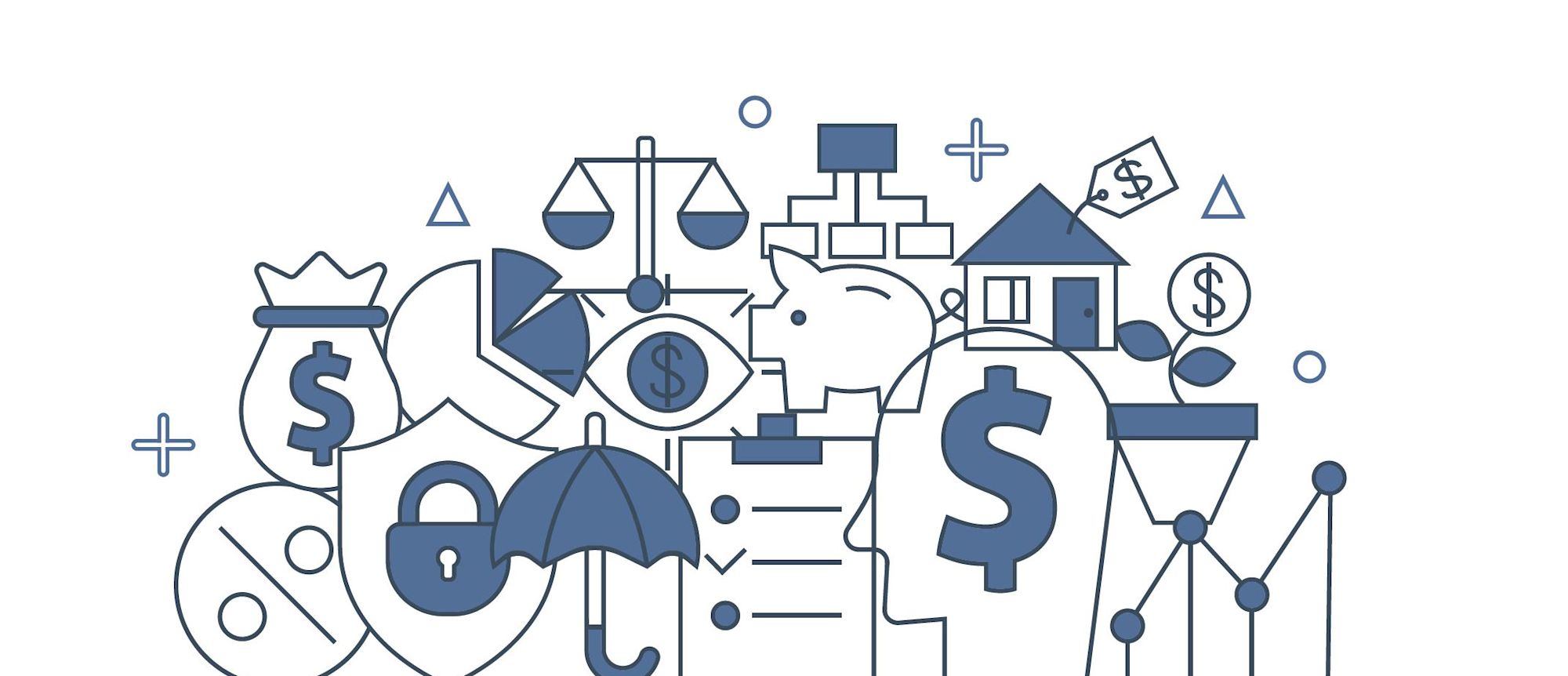Investment products are not insured by the FDIC, are not deposits, and may lose value.
Improving Your Financial Outlook
Every year, we make resolutions and set goals to improve our overall well-being. Whether we achieve our goals is another matter. Following are some practical measures you can take to improve your financial outlook in 2020.
1. Set Financial Goals
It will be difficult to improve your financial status without taking the time to set goals. The best, most achievable goals are specific, measurable, and attainable. One goal, for example, may be to save more for your future retirement. Begin by determining exactly how much money you would like to save each pay period, year, etc. Make sure it is reasonable to achieve, such as designating an additional 1% of your salary to be automatically deferred into your retirement savings. When you have determined your specific goals, then take the necessary steps to implement them.
2. Complete An Annual Financial Review
Do you see your dentist and doctor at least annually? Do you bring in your car for regular maintenance? Your finances deserve the same level of care and attention. For the best results, complete a financial exam with a trusted financial advisor. Cover the basics: What are your priorities and objectives for the year ahead? Are your savings on track to meet your upcoming priorities? Are you managing your budget well? Are your investments performing well? Has anything in your life changed in the past year? If so, what financial adjustments should you make?
3. Review Your Investments
This should be part of your annual review with your advisor, but you can and should also review your investments throughout the year on your own. Don’t fret over the short-term ups and downs which come with investing in equities.
Focus on the big picture:
- Do you have a thorough and well-constructed investment plan?
- Are you invested appropriately for your level of risk tolerance and the timeline of each financial goal?
- Are your assets properly diversified?
- Do you have a disciplined decision-making process?
- Is your portfolio structured in the most tax-efficient manner possible?
When you review the performance of your portfolio and its components, compare the performance numbers to the most relevant and accurate benchmark. If you own small-cap U.S. stocks, for example, then compare results with the Russell 2000 Index rather than the S&P 500.
4. Calculate Your Net Worth
This should also be part of your annual review, but you can and should do a review of your net worth periodically with the help of recent investment account statements and your mortgage or personal loan account balance. This is simply a snapshot of all the assets you own minus all the liabilities you owe. Do this every year and track your progress. Over time, this number should continue to grow.
5. Pay Off Your Debts
Technically, debt is a four-letter word. But not all debt is equal and not all debt is bad. Very few of us can buy a house without a mortgage.
On the other hand, some debt, such as high-interest rate credit card debt, can be a financial albatross.
Try to avoid charging more on your credit card than you’re able to pay off each month. If you carry a credit card account balance and you’re paying an interest rate of 20% or more, then pay that debt off as soon as possible. In some cases, it may be helpful to see a credit counselor.
6. Spend Less Than You Earn
This concept sounds obvious, but a lot of people fail on this key step. First, understand your monthly cash flow; that is, determine the amount of cash inflows each month (salary, wages, interest/dividends, etc.) versus cash outflows each month (mortgage, utilities, groceries, etc.). When you have an accurate cash flow statement, you can then analyze your expenses to determine which are necessary and which are discretionary, or non-essential.
Prioritize those expenses that are necessities. Target the non-essential expenses if you are looking for areas to reduce your spending.
7. Step Up Your Savings
We all may have an opportunity to save more money than we currently do. After reviewing your budget and cash flow, as previously described, you’ll know how much you earn, spend and save during a given period. If possible, look for areas in which you may be able to increase the amount you save, even if it is a small amount. Any additional savings will help to achieve your future goals, and you’ll thank yourself for this in the future.
8. Go Direct Deposit
The easiest way to save money is to prevent yourself from spending it in the first place. You can have money directly deposited into your retirement account, whether it’s a workplace plan or an individual retirement account. There are income tax benefits to directly contributing to a retirement account as well. Not only do funds in these accounts grow income tax deferred, but when you contribute, your overall taxable income is reduced by the contribution amount, which in turn decreases your income tax liability for the year.
9. Start An Emergency Fund
It is generally considered best practice to have cash readily available to cover three to six months of living expenses. This emergency fund is in place to account for unforeseen circumstances, such as the loss of a job or a sudden illness. Develop a plan to put some money aside every month. Unlike retirement savings, this money should be kept somewhere safe and easy to access, such as a checking or savings account.
10. Make Sure You're Covered
Make sure you address all the “what ifs” in your financial life. For instance: what if you die, are unable to work, suffer a major illness or accident, or experience a house fire? Work with a trusted financial advisor to fully understand the risk management tools which are available to you. Make sure you have the right kind of insurance and enough coverage to address the major needs of you and your family. Coverage which should be reviewed on an annual basis includes life, disability, health, home, and auto insurance. It may be advantageous to include additional coverages, such as long-term care and personal catastrophe liability, as a discussion item as well.




